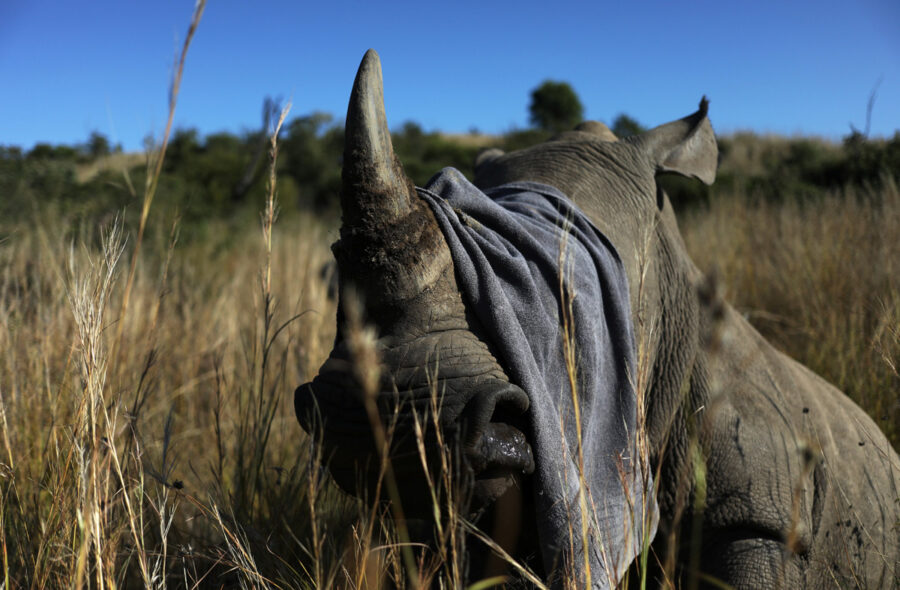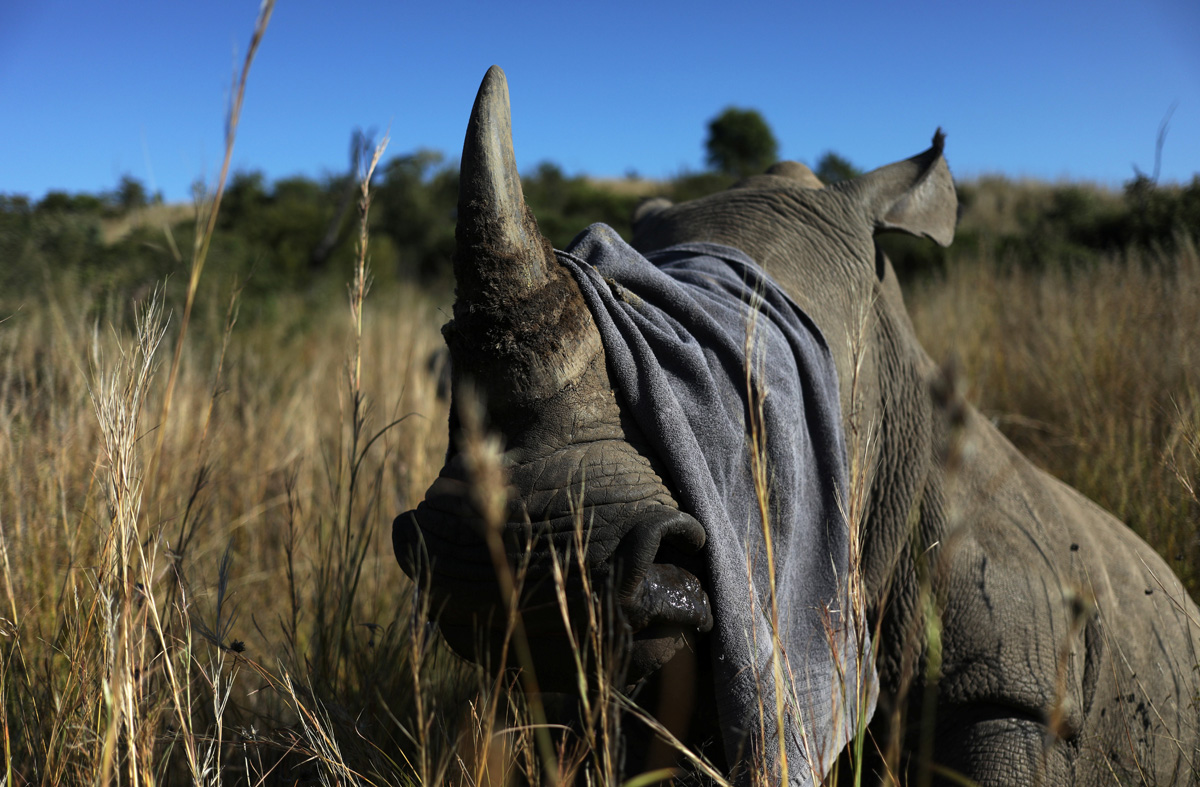
Rhino Poachers Return in South Africa with ‘Serious Number’ of Poaching Incidents
HOEDSPRUIT, South Africa (Reuters) – Rhino poaching is unfortunately on the rise again in South Africa since the government loosened coronavirus restrictions, following a year-long lull due to the pandemic, wildlife parks say. The strict limits on travel, including international travel, imposed in March last year had the happy side effect of keeping poachers at […]

HOEDSPRUIT, South Africa (Reuters) – Rhino poaching is unfortunately on the rise again in South Africa since the government loosened coronavirus restrictions, following a year-long lull due to the pandemic, wildlife parks say.
The strict limits on travel, including international travel, imposed in March last year had the happy side effect of keeping poachers at bay. In 2020, 394 rhinos were poached, 30 percent fewer than the year before and the lowest yearly tally since 2011.
But then South Africa began easing international travel restrictions in November.
Kruger particularly has been experiencing serious number of rhino poaching incidents
“Since November, December last year and into 2021, this landscape and particularly the Kruger National Park has been experiencing serious numbers of rhino poaching incidents,” said Jo Shaw, the Africa Rhino Lead for WWF International Network.
She declined to say how many incidents had occurred.
“There is a very real and realised threat as poaching pressure has increased since lockdown perhaps to meet the demand from the international markets,” she said.
Local and international crime syndicates involved in rhino poaching
Rhino poaching often involves both local poachers and international criminal syndicates that smuggle the high value commodity across borders, often to Asia where demand is high.
Their methods are cruel: The rhinos are usually shot with a tranquiliser gun before the horn is hacked off, resulting in the animal being left to bleed to death.
Less budget for anti-poaching patrols following lull in tourism
Reserves, which have been battling tighter budgets amid a coronavirus-induced lull in tourism, have also been forced to cut back on anti-poaching patrols, compounding the threat to rhinos.
Some reserves use dehorning as one of the methods to prevent armed poachers from taking advantage of easier cross-border travel.
Veterinarians cut the horn at the stub, rather than removing it all, which prevents the rhino from bleeding to death. Balule Nature Reserve, located in the greater Kruger system has de-horned 100 rhinos since April 2019. Last month (April 2021), NGO Wildlife Act set out to dehorn the entire white rhino population at Spioenkop Nature Reserve in KZN.
South Africa’s environmental ministry is expected to release its 2021 half-year poaching figures at the end of June.
“As [lockdown] restrictions over time have become less, there has been an uptick in poaching as a result,” said Julian Rademeyer, director of the organised crime observatory for East and Southern Africa at the Global Initiative Against Transnational Organised Crime.
South Africa has about 16,000 rhinos located within its borders, Frances Craigie, chief director of enforcement at the environmental ministry told Reuters.
But relentless poaching and a drought in the North-East region has hit the rhino population hard. In the Kruger National Park, the number of rhinos has plummeted almost more than two thirds in the last decade to around 3,800 in 2019 from 11,800 rhinos in 2008, a South African National Parks report showed.
(Reporting by Akhona Matshoba in Johannesburg and Shafiek Tassiem in Hoedspruit; Editing by Tanisha Heiberg and Raissa Kasolowsky from Reuters, and Jenni Baxter / SAPeople)
